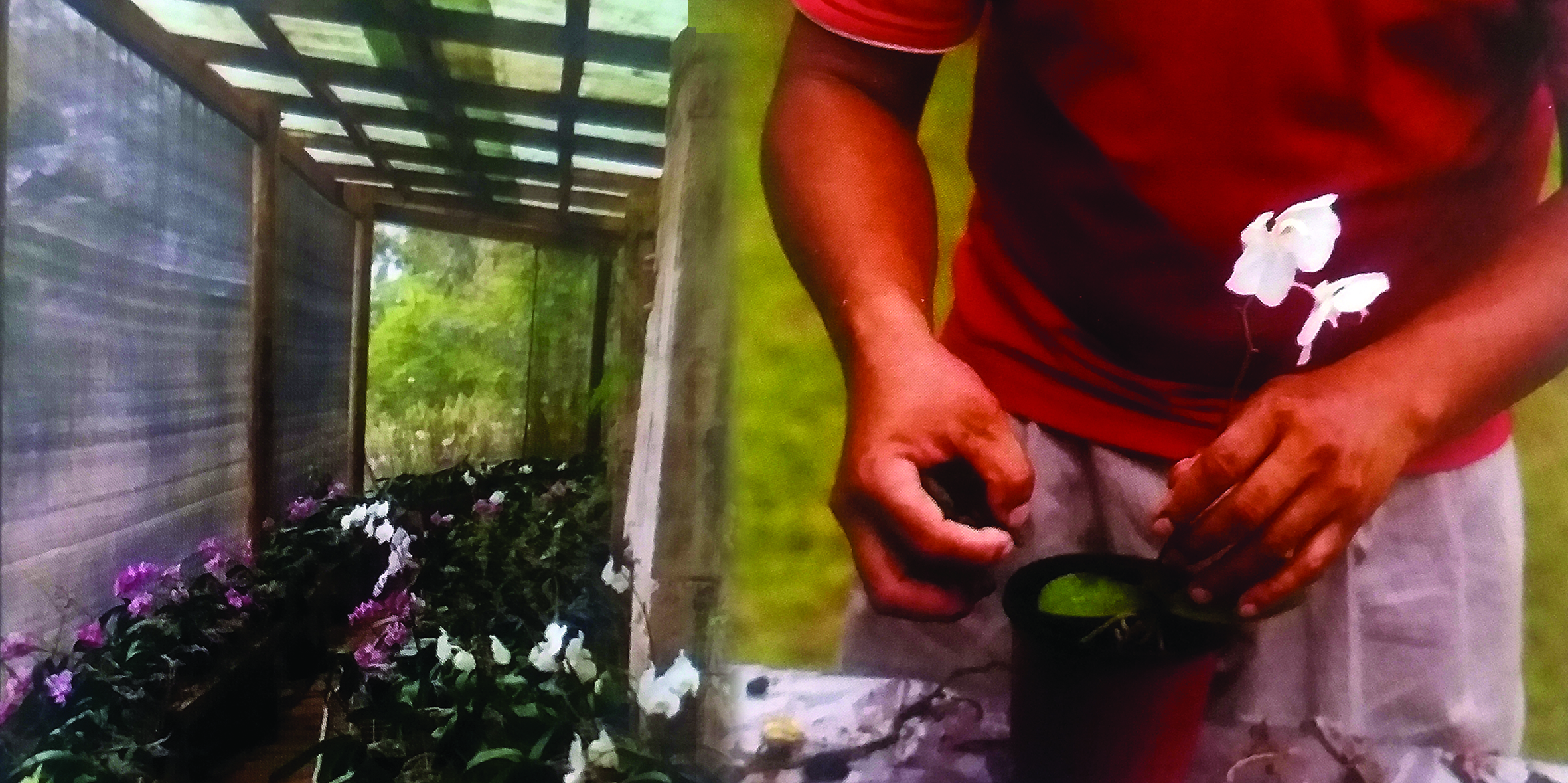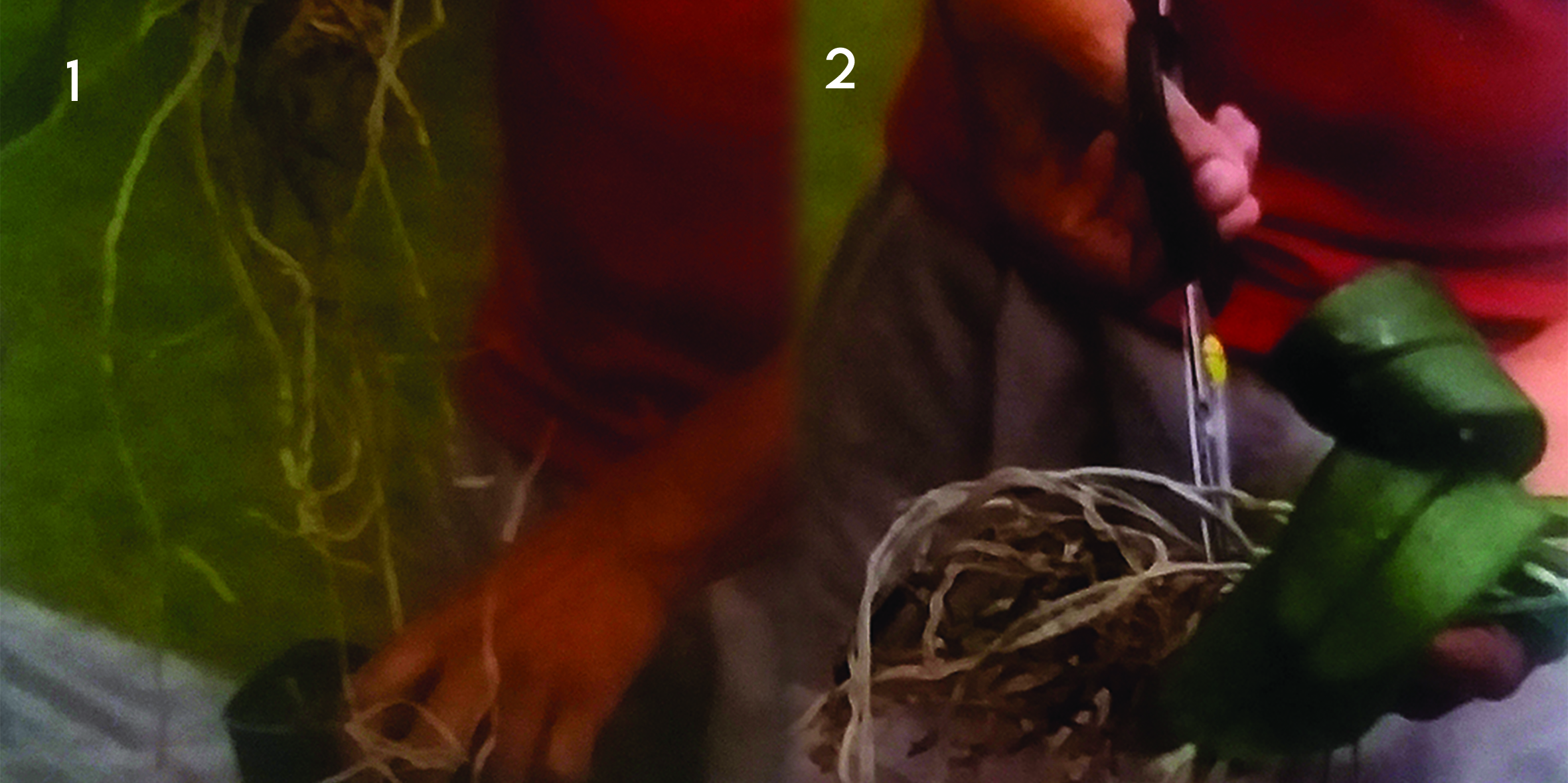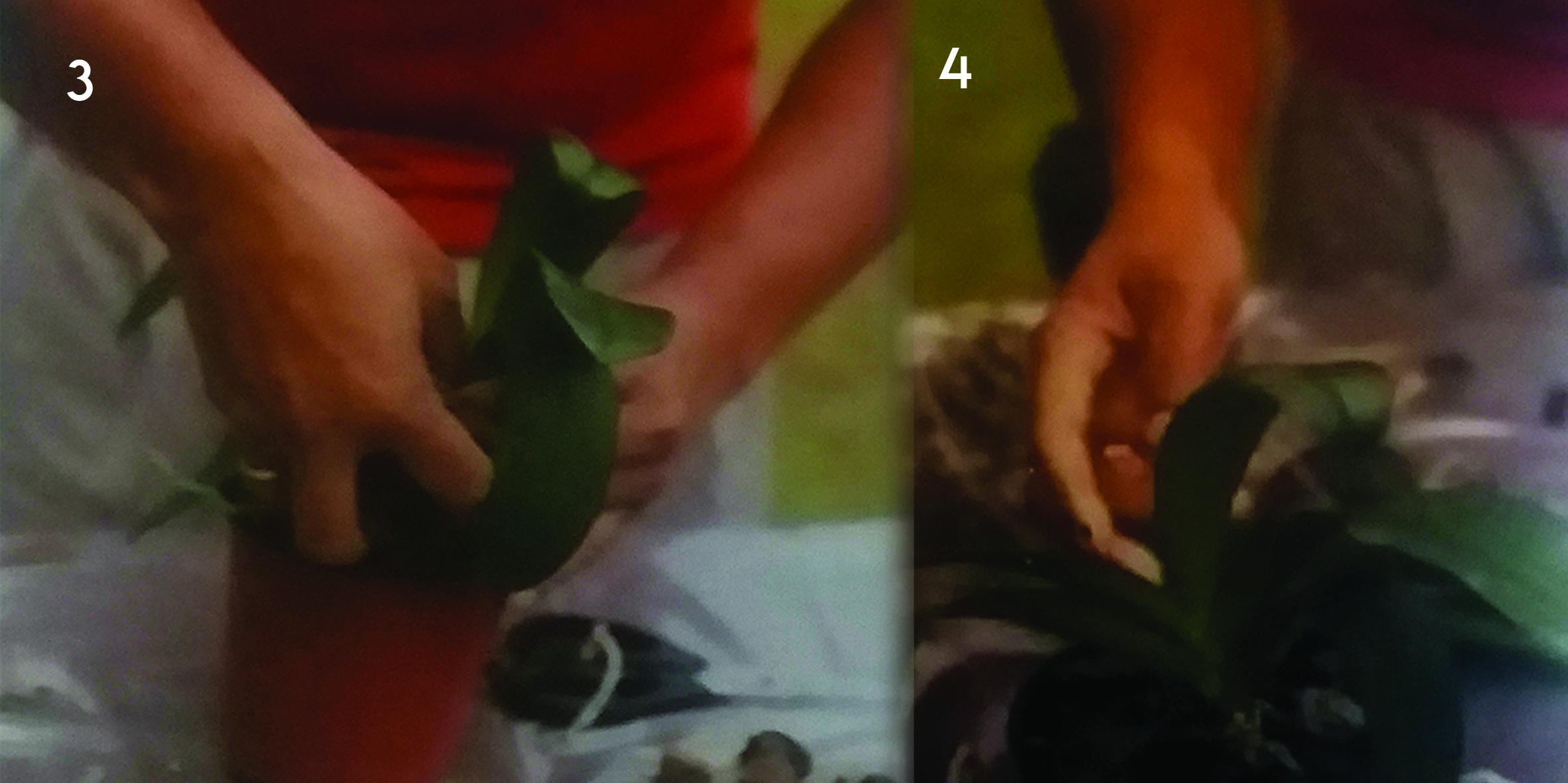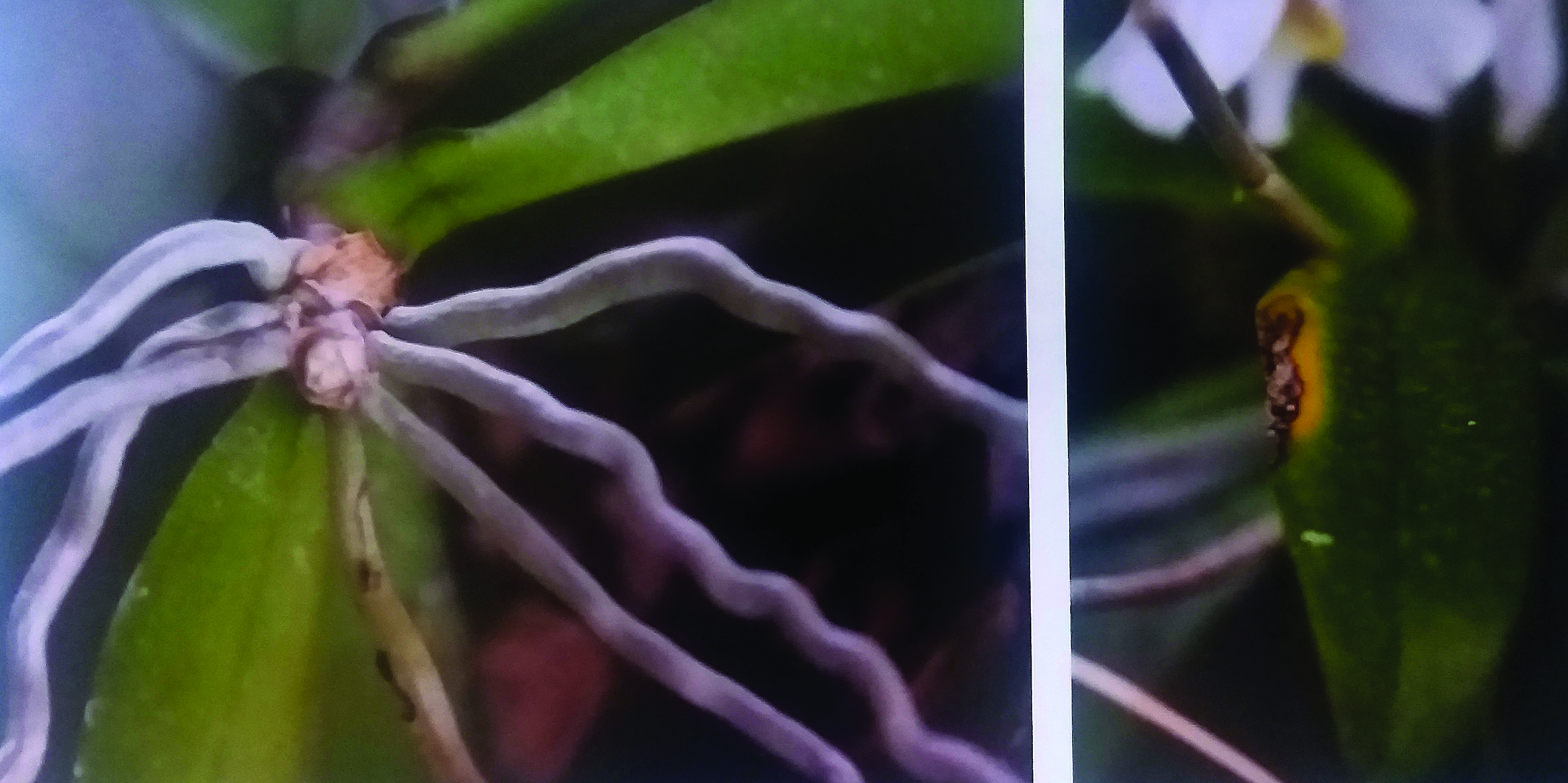b l o g
m a r c h 2 0 2 1

(L) A phalaenopsis shade house at South Sea Orchids that provides total rain control and 80% shade, (R) “Blue metal” (basaltic gravel) is the preferred planting medium for phalaenopsis orchids
With Livai Kurukuruvakatini, Technical Instructor of South Sea Orchids
Growing Conditions
Phalaenopsis orchids are suited to warm, humid areas with abundant moisture. Since all phalaenopsis are natives to tropical rain forest areas, they enjoy a year round high temperature which can vary from 16°C at night to 32°C in the day.
Phalaenopsis orchids will grow well in any part of Fiji provided they have correct ‘shade house’ structure. Phalaenopsis require total rain control, which means that the structure you build for them should allow for light to come but not rain. The reason for this is that too much rain in the axel of the leaves at night will cause rots and eventually death.
At South Sea Orchids in Nadi, Phalaenopsis orchids are grown in ‘shadehouses’ that have clear fiberglass roofing or U.V treated plastic sheets on the top of the house and 80% salon cloth on the sides of the house. Total rain control could also be achieved by used thick clear plastic and shade cloth.
Required potting mix
The planting medium used in planting phalaenopsis orchids has to provide similar conditions to their natural environment. Therefore, “Blue metal” (basaltic gravel) is used as the planting medium, this material is readily available and relatively cheap.
Looking after your plants
Feeding your plants
The feeding requirements for phalaenopsis orchids are very similar to the requirements of dendrobium orchids. For commercial production of phalaenopsis orchids at South Sea Orchids, foliar fertilizer is applied twice a week alternating between a high N fertilizer and a high K fertilizer. Bloom size in phalaenopsis is most closely linked to nutrition; if your blooms are of a small size then you are probably not providing them with enough food.
Watering requirements
Watering is done twice a week in the morning. Watering should be done very thoroughly. You need to really saturate the plant and then don’t water it again until it is bone dry.
Repotting and dividing
Phalaenopsis can be vegetatively multiplied by removing keiki’s (baby plants) from the mother plant and also by a top cut with at least three aerial roots.

(1) Find a mature plant with at least one baby plant and remove from the pot (2) With clean scissors, gently cut and separate the plant baby from the mother plant. Ensure that both plants have a sufficient root system

(3) Place each plant in a pot and fill with ‘blue metal’ in order to prop up the plant (4) Apply slowly release fertiliser. Remember it is not necessary to have all the roots inside the pot
Other maintenance
Flowering of phalaenopsis is predominantly in the Fiji winter time but by cutting back to a node you can induce a side branching flower.
Checking your plants

(L) The green thick root system shows that the plant is doing well, if there are any rots on leaves (R) than these should be removed
Dealing with pests and diseases
In the summertime, weekly applications of fungicides (sundomil) or even bleach may be required to prevent rots in your phalaenopsis orchids. Use insecticide only when needed.
